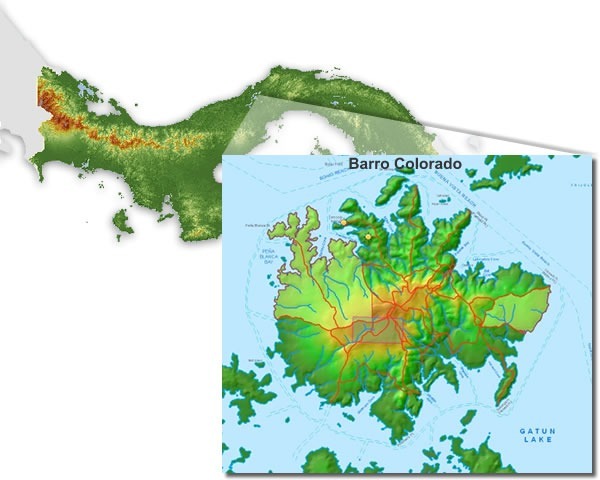
In a tropical forest, plants do not arrange and distribute themselves in space 'at random', but organise themselves to form networks at different spatial scales - from microscopic to macroscopic - that seem better able to resist changes, both natural and human-induced.
With a group researchers at the IMT School, we tested this fascinating hypothesis by analysing with the methods of statistical physics the data of the Barro Colorado Island, in Panama, where 300 plant species on a 50-hectare plot have been continuously monitored for 40 years. Using the positions of more than 400,000 trees and shrubs, we mapped so-called cluster networks, i.e. 'groupings' of plants in which each is separated from another by a distance of less than a certain size.
In our study, published in the journal Physical Review E, which dedicated a special focus to the article, we show that in the forest, the dominant plant species distribute in clusters that follow a scale-free distribution, i.e. the number of plants included in a cluster of a certain size does not change when we change the spatial resolution at which we look at the system. This particular type of organisation corresponds to what is referred to in the physics of complex systems as a 'critical state', in which the effects of perturbations are quickly felt throughout the system. Examples of critical states are the interface conditions of a system moving from a disordered to an ordered state, such as the transition from a liquid to a solid state. The condition at the interface between two phases is called a critical state and the point at which the transition occurs is called the critical point.

A growing body of empirical evidence suggests that biological systems, of which a tropical forest is an example, operate under conditions that are in a critical state, i.e. on the borderline between an ordered and a disordered phase. Our study shows that this appears to be the case for the tropical forest under investigation. The organisation of this ecosystem is such that, if one covers the area occupied by plants with circles of small radius (small spatial scales), one observes that the plants are distributed to form small clusters, whereas if one chooses circles of larger radius (large spatial scales), the size of the clusters increases until, at a certain threshold value, a single 'giant cluster' comes to include almost the entire plant population. This sudden transition from discrete to continuous (many clusters merging into a single cluster) is a phase transition known as a percolation. The critical radius for such a transition to be observed has been estimated to be 5 metres for this ecosystem.
On the other hand, looking at how the single most abundant species is organised, the shrub Hybanthus prunifolius, a different pattern emerges. For this shrub, there is no abrupt transition from the discrete to the continuous, but rather a range of values that produce a 'percolating cluster', extending over the sample area and encompassing a large fraction of the population. In other words, the individual species has no 'special' length scale, but shows a system-wide clustering on many different scales: the hallmark of a system living in a critical state.
This type of organisation seems to offer a compromise between different biological needs, as it allows species to spread over the entire area while maintaining the resilience that comes from local clusters connected through pollination or other short-distance interactions. This scale-free network could be an intelligent self-organising mechanism to increase ecosystem robustness. The analysis of Barro Colorado's enormous amount of data, aided by computer simulations, confirmed our hypothesis, paving the way for the possible definition of tools to monitor the resilience of Earth's green lungs, crucial for the survival and health of the entire planet.